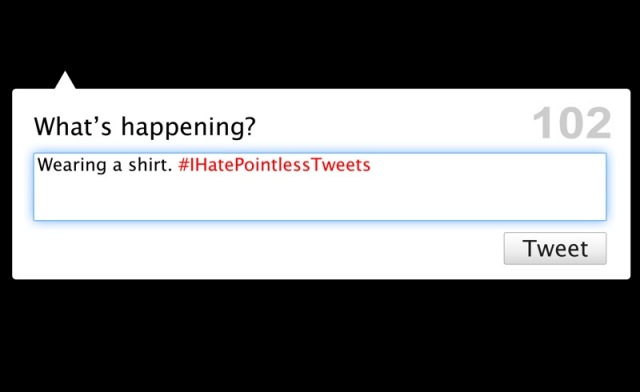
SOCIAL NETWORKING
What is it?
Lenhart and Madden (2007) explain that a 'social networking site is an online place where a user can create a profile and build a personal network that connects him or her to other users.'
Who does it?
While people of all ages from in-utero to in a nursing home have an online presence, it it by far most popular amongst the younger generation,i.e. those who have grown up using computers and other technologically advanced devices.

The above image shows how Lenhart and Madden (2011) the huge variation of social network users across demographic groups. It can be seen that women and young adults (aged 18 to 29) are huge contributers to social networking. The study, which was conducted by Pew, labeled young adult women the “power users” of social networking. They recieved this title because of both the time they use it (69% on an avergage day) and those converting to new social networks (89%).
Why do we do it?

Social networking allows individuals to not only connect with long lost friends and current ones, but also create an illusion of a very active social life. It has become apart of everyday life. So many people wake up and check their Facebook timeline, twitter feed and tumblr dash like the morning paper. It's an addictive habit and it's only increased over time.
When and where do we do it?

Social networking can happen anywhere during any event at anytime thanks to smartphones and free wifi at every corner. Now you too can know that Jill is currently in line at the post office (in under 140 characters!).
TYPES OF SOCIAL MEDIA
Who was first?
Boyd and Ellison (2007) concluded that one of the very first social networking sites launched was SixDegrees.com in 1997. It combined the features of already existing AIM and similar buddy lists with the likes of classmates.com
What's the most popular?

Typical timespan?
SixDegrees.com lasted until 2001, whereas Friendster (which started in 2002) is still operating. Timespan for these sites are so varied because of the recent nature of their creation.
Other well-known sites?

YOUR ONLINE IDENTITY
What is it?

Huffaker (2004) explores the two ways in which one can have idenitity online. Identity can be described via the individual, such as self-definition or personality traits or via the second, identity can be described in terms
of cultural and communal manifestations, such as social roles, relationships with others or shared values.
Positives?
This creation of an online self or even a new self can be liberating for many individuals and seen as theraputic.

Negatives?

Huffaker (2004) touches on the importance of understanding how often people take advantage of anonymity or flexibility when they are online.
PUBLIC vs. PRIVATE
How private are our online lives?
According to the Pew Internet and American Life project, both teens and adults actively manage their information online -- 60% of adults and 66% of teens restrict access to information in their online profile. This study also revealed that only 6% of teens make their first and last name publicly accessible on social networks- which is a great thing for the future of social identities.
Differences

Your defintion of privacy compared to a sites definition may vary. Most sites have alterable settings which a lot of people utilise to protect themselves online.
Butler (2011) warns that 'the intricate and constantly changing privacy policies on the site require users to be extremely attentive to its updates in order to retain a true awareness of personal privacy settings.'
Government Input

YOUTH PRESENCE ONLINE
Is it a big deal?

Graves and Sacks (2012) state that students reliance on social media and networking is undeniable and this is considered a fact in the digital community. The statistics mentiined earlier also add to this line of thinking.
IMPRESSION MANAGEMENT
What is it?

Rosenbloom (2008) simplified this term in her article by explaining that common sense can be a similiar term and "social scientists call it “impression management” and attribute much of their understanding of the process to the sociologist Erving Goffman, who in a 1959 book, “The Presentation of Self in Everyday Life,” likened human interactions to a theatrical performance."
Rosenbloom (2008) also spoke to Joseph B. Walther (professor of communication and telecommunication at Michigan State University) about the term and it's relevance in society today. He said that today’s social networking and dating sites are “like impression management on steroids”.

Real life impression management which can be applied to your online identity with a few changes to the topics. "Will liking this page say 'x' about me?" "Will being friends with this person make 'y' think 'x' about me?"
ONLINE BEHAVIOUR EFFECTING OFFLINE BEHAVIOUR AND VICE VERSA

Some recent examples of online behaviour effecting offline behaviour can be found in the bullying of students via 'cyberbullying'. The ability to bully people via a computer has allowed many children to feel invincible when it comes to any and all consequences from these actions.
"Middle-school victims of cyberbulllying are more apt to commit suicide. The AP-MTV survey found that 8% of cyberbulllying victims and 12% of sexting victims have considered ending their own life compared to 3% of people who have not been bullied and were not involved in sexting." PureSight (2012)

Zywica & Danowski (2008) used a popularity measurement in their study of college students and their relationships and affections via facebook and stated that one way this can be measured 'is by the status indicators, such as number of friends and the length of the wall in Facebook.'
FUTURE OF SOCIAL NETWORKING
Where is there to go?

There are new ideas being created every day in the current digital age and no one can say where these sites will end up or how they'll get there until it happens.
Will it fade away?
While some sites just can't break into the ever explanding list of social networking sites, other's have thrived for many years. The possibility of a site as huge as Facebook not existing seems extremely unlikely.
REFERENCES
Boyd, D. M. & Ellison, N. B. (2007). Social network sites: Definition, history, and scholarship. Journal of Computer-Mediated Communication, 13(1).
Butler, E. (2011). Privacy setting awareness on facebook and its effect on user-posted content . Pacific and Asian Communication Association, 14(1), 39-55.
Cyberbullying statistics (2012). Retrieved October 20, 2012 from http://puresight.com/Cyberbullying/cyber-bullying-statistics.html
Danowski, J., Zywica, J. & (2008). The faces of facebookers: Investigating social enhancement and social compensation hypotheses; predicting Facebook and offline popularity from sociability and self-esteem, and mapping the meanings of popularity with semantic networks . Journal of Computer-Mediated Communication, 14 .
Huffaker, D. (2004). Gender similarities and differences in online identity and language use among teenage bloggers . Faculty of the Graduate School of Arts and Sciences of Georgetown University
Lenhart, A. & Madden, M. (2007). Social networking websites and teens. Retrieved October 23, 2012 from http://www.pewinternet.org/Reports/2007/Social-Networking-Websites-and-Teens/Data-Memo.aspx
Rosenbloom, S. (2008). Putting your best cyberface forward. Retrieved October 13, 2012 from http://www.nytimes.com/2008/01/03/fashion/03impression.html?pagewanted=print
Sacks, M. A & Graves, N. (2012). How many “friends” do you need? Teaching students how to network using social media . Business Communication Quarterly, 75 (1).
Who uses social networking sites? (2012). Retrieved October 22, 2012 from http://restaurantbriefing.com/2012/01/who-uses-social-networking-sites/
